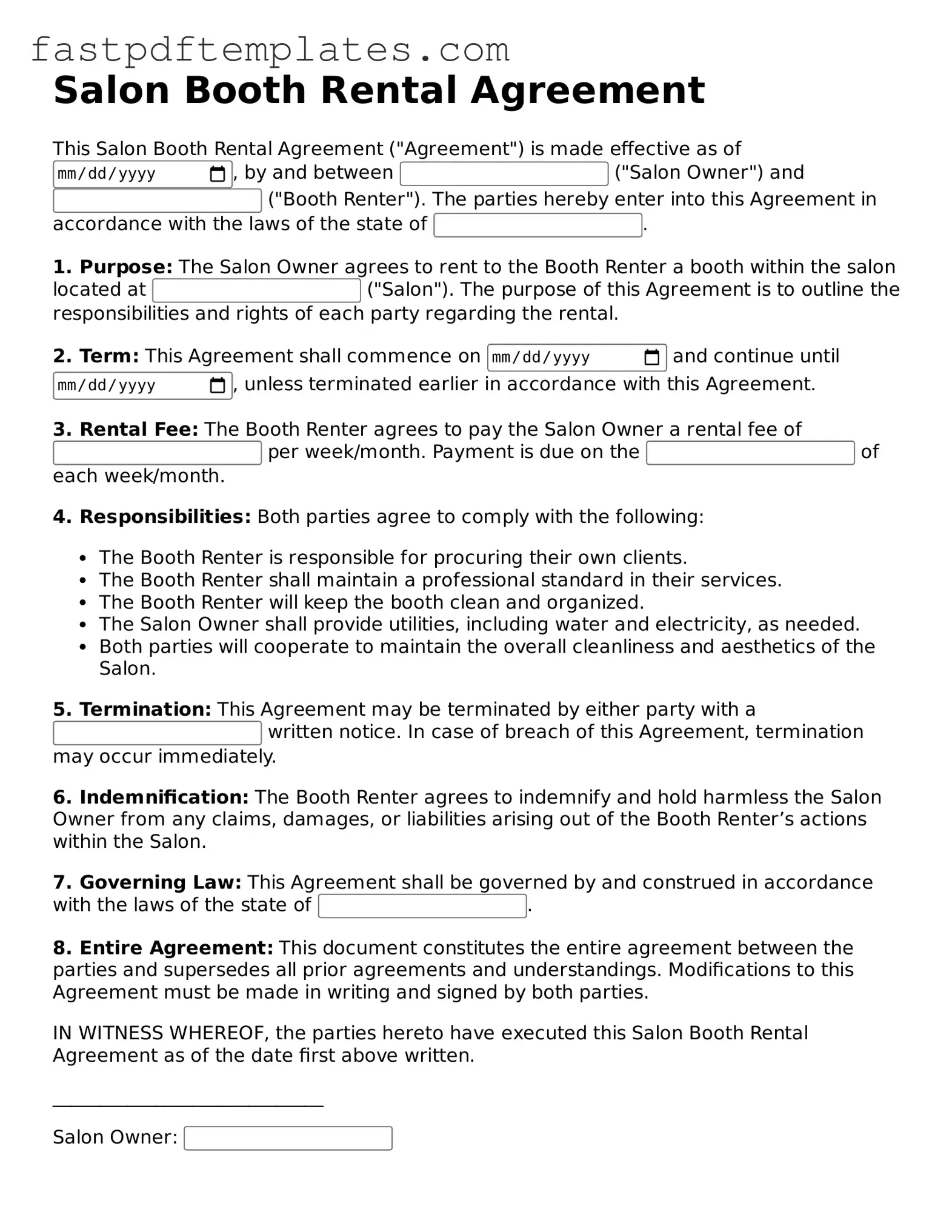Fillable Salon Booth Rental Agreement Document
A Salon Booth Rental Agreement is a legal document that outlines the terms and conditions between a salon owner and a stylist who rents a booth within the salon. This agreement serves to protect both parties by clearly defining responsibilities, payment terms, and other essential details. Understanding this form is crucial for anyone looking to establish a successful rental relationship in the beauty industry.
Access Document
